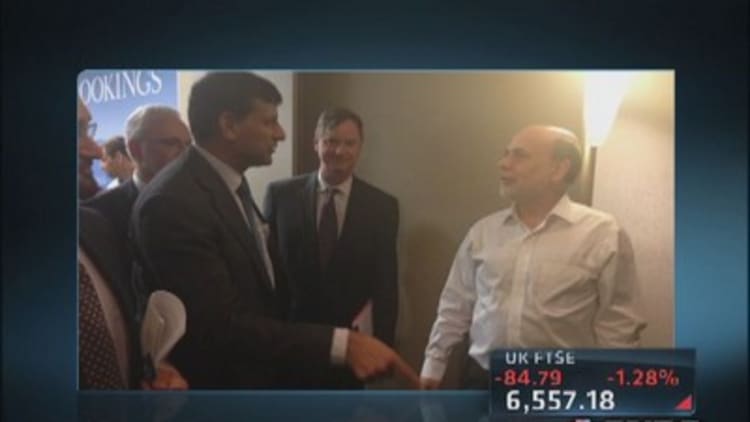National elections are underway in India, but will take five weeks to complete. That leaves many American observers wondering: Why so long?
The short answer is that India's elections are huge—and mobile.
The elections, which started on April 7, will end on May 12 and are decided by popular vote. In nine phases of polling that move from region to region, 814 million Indians will be eligible to vote for the next government—roughly the number of people who have been eligible in the last four U.S. presidential elections combined.
Read MoreBankers behaving badly: Bernanke tells off India's Rajan
The number of voters in India has grown substantially since the last parliamentary election in 2009, with more than 100 million having been added to electoral rolls—an increase roughly equal to the combined populations of California, Texas, New York and Florida. By way of comparison, U.S. voter rolls generally increase by about 10 million people every election cycle.
Those large numbers had the Election Commission of India planning months in advance to create a staggered process that allows millions of security personnel to move their focus from place to place along with the voting apparatus. (Despite that, voting was marred by violence in the eastern states of Bihar and Chhattisgarh from separatist groups last week.)
Read More India elections: Business winners and losers
The vote deploys 930,000 polling stations and 1.7 million electronic voting machines. The first party or coalition that surpasses 272 seats will be invited to form the next government.
Exactly 3,305 candidates are vying for the 543 seats in the lower house of parliament. The most important state is Uttar Pradesh, which has the highest number of seats with 80. Traditionally, the state is the battleground during the campaigns and the party with the most seats in the state wins the election.
Indian citizens will have 370 different political parties to choose from. Although it's a two-horse race between the incumbent government run by the Congress party headed by Rahul Gandhi and its perennial challenger, the Bharatiya Janata Party (BJP) headed by Narendra Modi, other political parties take a significant portion of the overall vote.

Current opinion polls suggest that the BJP's Modi is ahead, though it's important to note that Indian opinion polls have a history of projecting outcomes incorrectly.
Whoever comes to power, the electoral process is unlikely to be questioned by the losers—the vote is one of the few things in Indian bureaucracy that remains transparent, because of intense scrutiny from around the world.
—By Anand Katakam, special to CNBC

